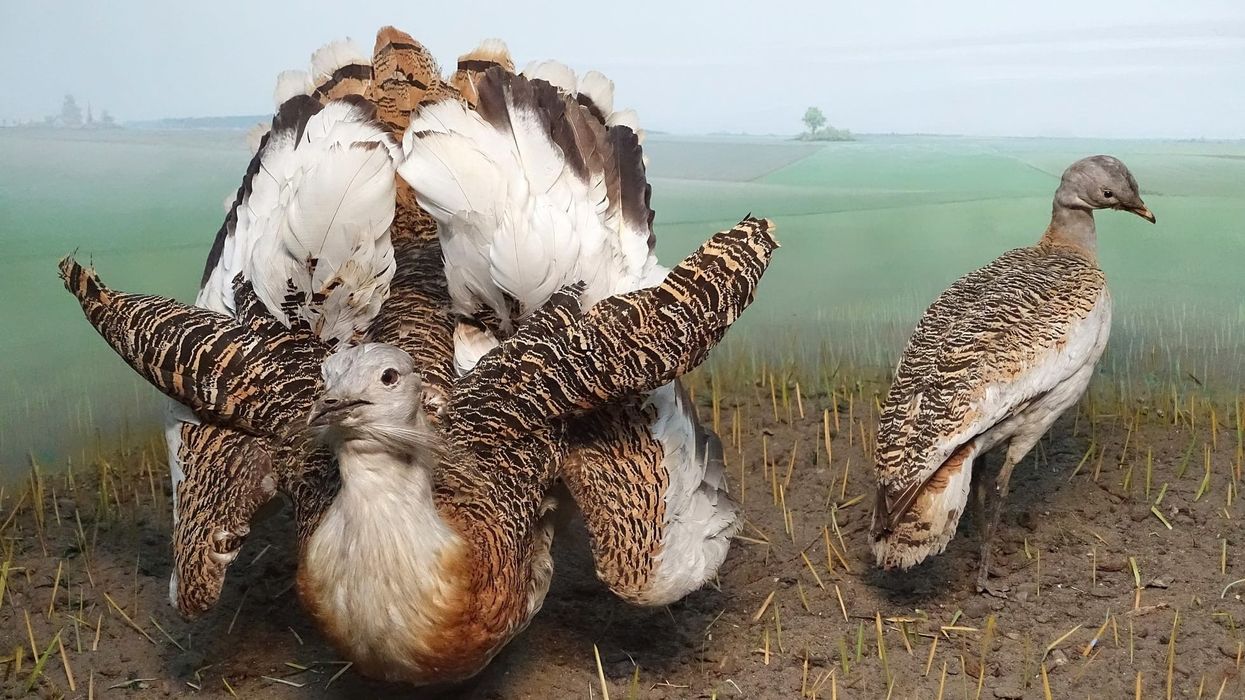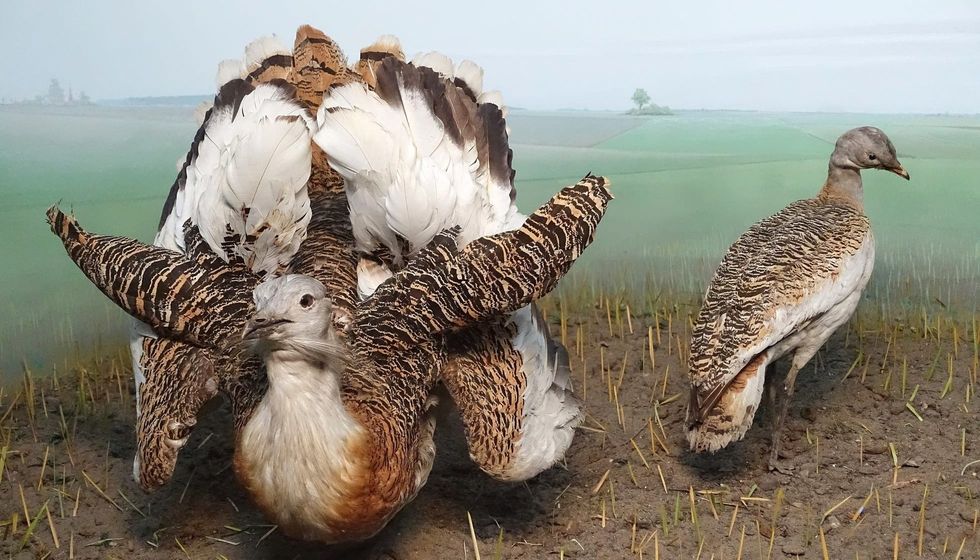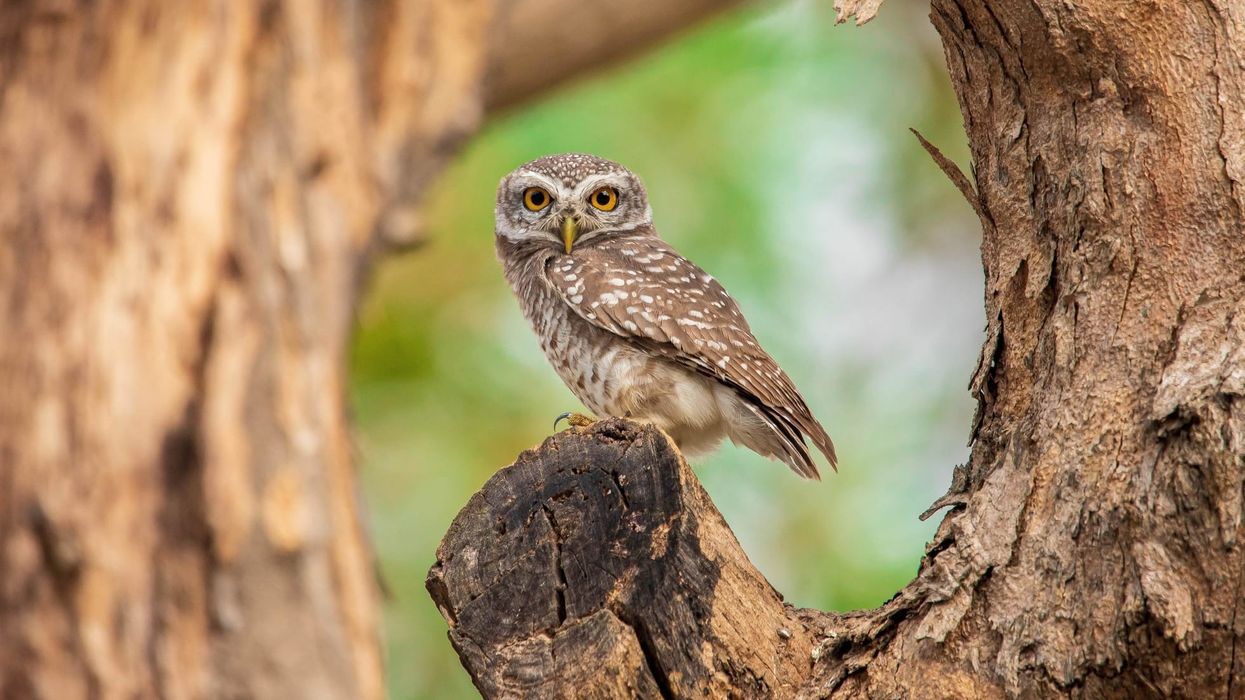Have you ever heard about one of the heaviest flying bird species, the Great Bustard? If not, our article can bring you curious facts about the giant bird.
The Great Bustards are large birds of the bustard family and exclusive members of the genus Otis. Their habitat is open grasslands or cultivational land that range between South and Central Europe, northern Morocco, and Central and East Asia. The populations of Europe are residential while that of Asia are migratory.
Great bustards are categorized based on the scientific name in 1758 by Carl Linnaeus. Earlier, they were classified as Avis tarda in older journals by Pliny the Elder. From the scientific name Otis tarda, ‘Otis’ means ‘bustard’ in Greek, and ‘tarda’ means ‘slow' or 'deliberate’, in Latin.
As such, the name is apt for the standard walking style of the species. The Great Bustards are classified as Vulnerable by the IUCN. Many conservation steps are being taken to preserve these species.
We hope you enjoy reading about Great Bustards. You can go through our articles on other bustards like the Kori bustard and Houbara bustard too.
Great Bustard Interesting Facts
What type of animal is a Great Bustard?
A Great bustard (Otis tarda) is a large bird of the bustard family and the only member of the Otis genus.
What class of animal does a Great Bustard belong to?
A Great bustard bird belongs to the class of Aves.
How many Great Bustards are there in the world?
As per IUCN, the global population of Great Bustard is between 44,000-57,000.
Where does a Great Bustard live?
A Great bustard (Otis tarda) lives in the steppe, grassland, or open agricultural land of South and Central Europe and northern Morocco.
What is a Great Bustard's habitat?
A Great Bustard's habitat is open, flat grassland or steppe. Great bustards prefer to live on serene cultivation land and regions where wild or cultivated crops like plant fodders, vineyards, and cereals are available. During the breeding season, they avoid the disturbed land where humans do the regular agricultural practice. They also select areas with more insects population.
Who do Great Bustards live with?
Great bustards are gregarious and prefer to live in a flock of many dozens, mainly during winter. Only during the breeding season, do the female and male groups come together.
How long does a Great Bustard live?
A Great bastard (Otis tarda) lives for nearly 10 years, but few of them are known to live for more than 15 years. However, the species are known to have a maximum life span of 28 years.
The mortality rate is higher among adult male birds when compared to that of females. This is because males have fierce fighting among themselves and lose their lives during the breeding season.
How do they reproduce?
A Great Bustard reproduces by laying eggs, and breeding happens in March. These birds are polygamous; hence, single adult male mates with nearly five females.
Before mating, males shed their old feathers and develop new breeding plumage in January. During winter, the adult males gather in groups called lek, where they start dominance by performing competitive courtship displays to attract the females.
They fight fiercely, hitting one another with their bills. They also have a dazzling show where the male puffs up his throat as big as a football. Then it bends forward and pulls the head so that the head is not visible and chin feathers point upwards.
Later, it bends its tail flat along the back, showing the hidden white plumage and folding the wings. This appearance of male birds waiting for the females is called a foam bath.
The females lay an average of two glossy eggs after mating that is tan or olive in color. They do not build a nest but make shallow scrapes on the ground near the previous lek area.
The incubation period is 21-28 days and is done by females only. Once the eggs hatch, the chicks leave the nest immediately but do not move far from their mother until they are one year old.
Young birds develop adult plumage and practice flying skills at two months.
They practice flying by stretching, flapping, running, and hopping, and at around three months, they fly short distances. The young birds can camouflage when threatened.
The young birds start living independently by their first winter, but some still stay with their mothers until the next breeding season. The females get sexual maturity at two to three years while the males get mature at five to six years.
What is their conservation status?
As per the IUCN red list, the conservation status of the Great Bustard is considered Vulnerable. The Great Bustard became extinct in Great Britain. These species face many threats from humans like habitat loss due to thorough agricultural practices, plowing, deforestation, construction of power lines, roads, ditches, and fencing.
Chicks and juveniles die due to the overuse of chemical fertilizers and mechanization. Despite their large size, they fly high and face collisions with high power lines. In some countries, mortality is high due to hunting by humans.
Great Bustard Fun Facts
What do Great Bustards look like?
Great bustards are amongst the heaviest flying bird species. It is also amongst the most sexually dimorphic bird species regarding the size difference between females and males. The male birds are much heavier than the females.
The adult male is huge and robust with brown and black stripes above and white below with a head and long neck in gray. Its lower neck and breast are chestnut-colored, and a gold wash on the back.
As the male bird ages, his bright colors intensify, and he develops long white neck bristles. The female bird has a buff-colored breast and neck, and plumage is a brown and pale color, making it well camouflaged in open areas. The juveniles resemble female birds.

How cute are they?
The male Great Bustard looks handsome with its huge body, gold wash, heavy chest, and stately walk. However, during the mating period, they turn more attractive to attract females by developing breeding plumage and showing off white feathers. They also eat a poisonous beetle to appear heavier and more robust to their mate.
How do they communicate?
They communicate by making different sounds in different scenarios. For example, the males display courtship and produce booming sounds to attract the females.
How big is a Great Bustard?
The males and females of these species have significant variances in size. The males are nearly 45 in long, and the females are 35 in long. The males are 35-41.3 in tall, and the females are shorter than the males and are nearly 30-33.4 in tall.
How fast can a Great Bustard fly?
A Great Bustard usually walks very slowly and prefers to run than fly when disturbed by intruders. The running speed is not measured but is known to run faster than Red foxes, whose speed is 30 mph. The Great Bustard is a good flier and reaches a speed range of 30-61 mph (48-98 kph) while migrating.
How much does a Great Bustard weigh?
There is a significant difference in the weights of both sexes of these birds. The males' weight ranges from 13-40 lb and the females are 6.8-17.6 lb.
What are the male and female names of the species?
There is no specific name for both sexes of these birds. Males and females are known as male Great bustards and female Great bustards, respectively.
What would you call a baby Great Bustard?
The baby Great Bustards do not have any particular name and are generally called chicks.
What do they eat?
A Great Bustard takes different food based on seasons and is an omnivore. The central portion of their diet constitutes green plants and insects. However, they also feed on small amounts of seeds.
During winter, when insects are scarce, seeds and plant material constitutes their diet. The plant-based food that they eat mostly are grapes, crucifers, common dandelion and legumes, and dry seeds like barley and wheat. Young birds feed primarily on insects in their first summer and switch to adult seasonal foods.
Are they dangerous?
They are not dangerous to humans. They are, in fact, beneficial because of their insect diet. However, males are aggressive among themselves during mating season and have fierce fights, sometimes causing death. Like any other species, females are aggressive while protecting eggs and chicks.
Would they make a good pet?
They can be made pets, but their enclosure should be spacious enough to move freely and forage for insects. In addition, proper care has to be taken regarding their diet to keep them healthy.
Did you know...
The Great Bustard (Otis tarda) is not extinct.
The Great Bustard can fly, and it is one of the heaviest flying living bird species. The heaviest bird in India is the Great Indian bustard, and it makes booming sounds that echo in grasslands, and they make this sound attracts females.
The Great Bustard's Sounds
Both females and males are generally silent but can engage in deep grunts when angered or alarmed. In addition, they make grunting, booming, and raucous sounds as part of their courtship display. The mother bird makes guttural calls at the nest, and the chicks make trilling calls to communicate with their mother.
The Great Bustard's Migration
The Asian population migrates to the south in winter, while that of Europe does not. Especially the males in the Iberian population move short distances of nearly 3-24 mi to avoid higher summer temperatures.
During winter, the breeding population along the Volga River migrates nearly 1000 km to Kherson Oblast and Crimea, and the northern Mongolian population migrates over 2000 km to the Shaanxi province of China. Before migration, Great Bustards gather in pre-migratory sites.
Here at Kidadl, we have carefully created lots of interesting family-friendly animal facts for everyone to discover! Learn more about some other birds from our Golden-crowned sparrow fun facts and Red-crowned crane facts pages.
You can even occupy yourself at home by coloring in one of our free printable great bustard coloring pages.









